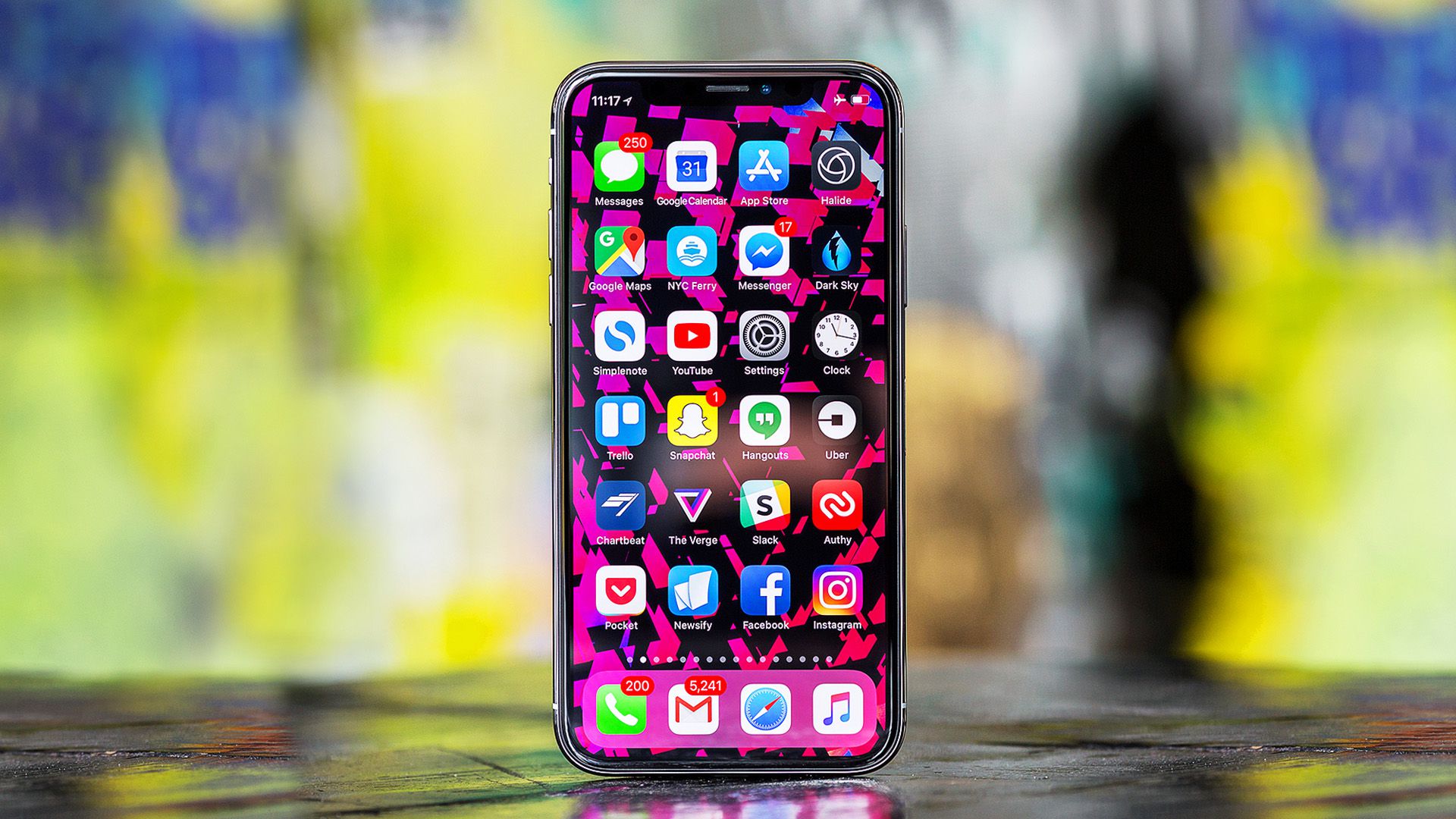The iPhone X is the huge leap forward that Apple’s handsets needed after ten years, and it’s even better in 2022 thanks to its iOS 16 upgrade and continually-added new features. Aside from the original iPhone in 2007, the iPhone X had the biggest impact on Apple’s smartphone direction ever – and even its newest successors haven’t changed much of its design innovations.
Apple itself is calling it the future of the smartphone, the embodiment of what it’s been trying to achieve for a decade. But while the iPhone X is all about premium parts and an all-new experience, it was a huge gamble for the Cupertino brand too – which paid off, as every new iPhone since then had largely kept the design, until the iPhone 14 Pro did away with the notch – but even then, Face ID remains and the standard iPhone 14 still has a notch.
Losing known, reliable elements like the Touch ID fingerprint scanner, the home button; introducing new methods of navigating and unlocking the phone – and charging a lot more for the privilege – seems risky for a company that was already treading new ground by doing away with the traditional headphone jack.
But the iPhone X was the handset we’d been demanding from Apple for years – a world away from the increasingly-tired designs leading up to the iPhone 8 that have continued to live in the nearly identical-looking iPhone SE (2022).
The fervor around this phone tells that story – everyone wants to know if the iPhone X is worth having, partly because it actually represents a new iPhone, and that fervor is such that they don’t seem to care about the cost. Thankfully, that cost has come down over the years, and it’s still a powerful phone.
So… is the iPhone X worth having? Did it change the direction of an industry where many of the specs Apple has put in – fast charging, wireless charging, bezel-less displays and face recognition – are already on the market?
We’ve had the iPhone X in our grasp for years now, and while it’s no longer one of the best smartphones around, it’s still an excellent handset – especially considering its age.
If you’re loving your iPhones X, or considering buying one, the package is a lot more tempting now that iOS 16 is out. Apple’s latest operating system brings many upgrades, like a customizable lock screen, improvements to Focus mode, and tweaks and changes to numerous other apps and features.
iPhone X price and release date
- Released on November 3 2017 worldwide
- Much cheaper than launch in 2020
- Comes in 64GB and 256GB storage sizes
It’s almost pointless to discuss the iPhone X price – it launched as the most expensive flagship phone on the market, but iPhone users are more willing than most to look past cost.
But, while the focus here is going to be on the technology, we still need to at least mention the price and release date. It’s out now, having launched worldwide on November 3 2017. The price – at least at launch – was harder to swallow.
At launch, the iPhone X cost $999 / £999 / AU$1,579 for the basic, 64GB model. If you wanted the larger 256GB model it cost $1,149 / £1,149 / AU$1,829.
Since then of course numerous newer models have landed, and Apple has discontinued the iPhone X. You can still find it at third-party retailers, but usually only refurbished models. The prices here vary but this has dropped from a high-end price to more of a lower mid-range one now.
Screen
- By far the best screen on an iPhone prior to XS
- Clear, vibrant colors
- Notch at top slightly irks, but doesn’t get in the way
The first thing you’ll notice about the new iPhone is hard to miss: the new screen blazes into your eyes the second you pick up the handset.
The 5.8-inch OLED display is, quite simply, the best thing Apple has ever crammed into an iPhone, or it was, until the iPhone XS arrived. It’s leaps ahead of the iPhone 8 and 8 Plus for so many reasons: the sharpness, the quality, the fact that it fills the whole front of the phone, and the color reproduction.
It’s also using a new, longer, screen, but while it looks larger than the iPhone 8 Plus’ 5.5-inch display on paper, it’s only marginally bigger in terms of actual screen real estate – it’s just stretched upwards, so it’s taller, not wider.
OLED technology means you’re getting deeper blacks and more blinding whites, so everything from websites to the photos you take in will look a little better.
Some will point to the fact that Samsung has been using OLED screens on its phones since the first Galaxy, but Apple counters that by saying it’s only now that the technology is good enough for its phones.
On the face of it that sounds defensive, but when you use the iPhone X you can see it’s a screen that’s incredibly, well, Apple.
It’s not the sharpest or most colorful screen on a smartphone, but it’s clean, crisp and doesn’t suffer from terrible color shifts when you move it around. It’s a great display to look at from all angles, and that’s what you want on a mobile device.
It’s also been dubbed the best in the world, by the esteemed DisplayMate testing, showing that it’s the brightest and more color-accurate OLED on the market and good off-centre brightness shifts – showing Apple can tune the tech from Samsung really well.
The term ‘bezel-less’ has been bandied about for the iPhone X, but that doesn’t really tell the right story. Yes, there are slight bands around the edges of the screen as this isn’t a curved screen iPhone, but they don’t mar the experience – they give the fingers something to land on, preventing accidental touches of the screen.
Apple could reduce these further in the future and offer a more visually-appealing iPhone, but on the X the experience is still striking.
Talking of visual appeal, the notch at the top of the iPhone X is something that’s been divisive, and that’s fair. Apple has taken this little chunk out of the top of the screen to house the new TrueDepth camera, and it encroaches on the display. A lot newer Android phones, including the OnePlus 6, copy this style, though even newer phones such as the OnePlus 6T are offering much smaller notches.
In portrait mode it’s hard to notice it’s there, and the way the notifications bar spills around it is nice.
However, place the phone in landscape mode and it’s far more noticeable; it’s an irritant when you’re watching movies, as when we wanted to expand them to fill the screen (one of the real beauties of having a longer display) elements of the action were cut out by the notch.
The longer screen is also thinner though – this means there’s less real estate for typing. We didn’t notice this at the start, but when flipping between the X and an older iPhone, you’ll really see there’s less space for your digits to tap onto.
While we’re talking about that longer screen, the 18:9 format is something we’ve seen on a number of other phones this year, and in the Android world the apps are largely encoded to fill the display just fine.
On the iPhone X, however, that’s not the case, with many apps we used packing massive black bars above and below the display. That’s quickly started to improve though, and each day more apps update for the longer screen.
The issue with apps using the black bars is that it makes the iPhone X look like any other handset from Apple – even an iPhone 3GS – and given the screen is the main visual differentiator on this phone, and you want every app to fill the display nicely. There are now very few apps left that have these bars above and below, with most expanding the screen to fill the whole front of the phone and curve around the notch.
The new display on the iPhone X also showcases a new feature for Apple: HDR playback. The phone can show movies encoded in the HDR10 and Dolby Vision formats, and combined with the OLED display the images offer so much more depth and realistic color reproduction.
If you’re watching a scene with explosions in it, the effect is incredible on the iPhone X – much like with all OLED screens.
However, it’s inherently harder to make out detail in darker scenes in HDR movies – that’s something you’ll need to adjust to.
Compared to the LCD screen of the iPhone 8 Plus, there are times when you can see less of the action, but compare them side by side and you’ll see that the overall richness, depth and quality for watching movies is just higher on the iPhone X.
Like the iPhone 8 and 8 Plus, the X uses a True Tone display, which mimics the lighting conditions around it and will adjust the white balance accordingly. It’s not a reason to buy the phone on its own, but it’s a really premium little extra that you’ll grow to like.
If you are a writer then you can write for us
 Lifeyet News Lifeyet News
Lifeyet News Lifeyet News





